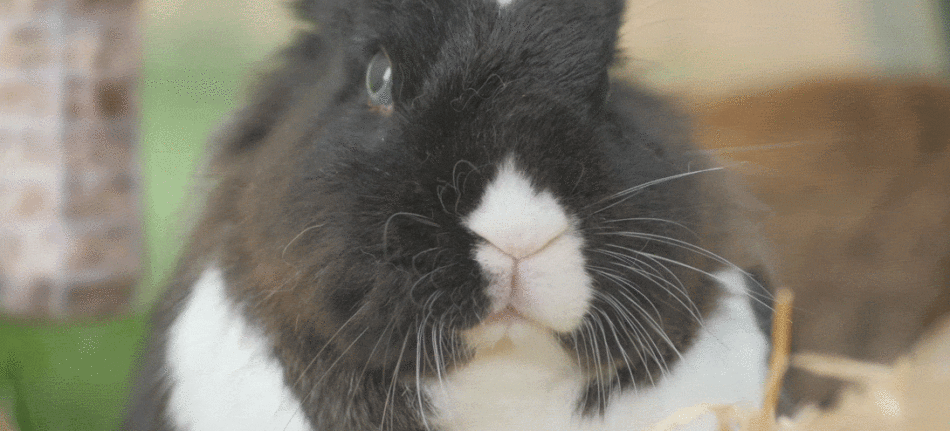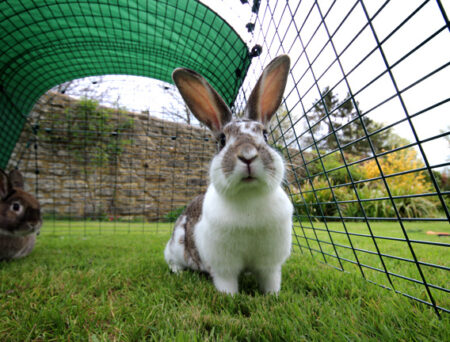How to Give Your Rabbit a Health Check

Rabbits will most likely not show any signs of illness or pain before it is really serious, as any weakness would mark them as an easy target for predators in the wild. It is therefore important that you, as an owner, carry out regular health checks on your pet, so that you are able to spot potential problems while they are still treatable.
Always take your rabbit to the vet as soon as you suspect something is not right. A rabbit’s health can deteriorate very quickly, so don’t lose any time wondering if it’s worth it or not.
Body
Put a towel on your lap and place your rabbit on top of it. Stroke him or her to calm them down. When your rabbit has settled, you can start examining their body.
Feel the stomach to make sure it’s not swollen or distended, and go through the rest of the body for signs of cuts, bruises or lumps. Feel the muscles in the legs, they should be strong and firm. Any wincing or unexpected movement from the rabbit could be a sign that the body part you’re touching is causing your rabbit pain.
Check your rabbit’s breathing; it should not be laboured. Wheezing or clicking noises from the lungs can be signs of illness.
It is worth getting a set of scales and regularly weighing your rabbit. Sudden weight loss is a serious sign of illness, and a lack of appetite is a strong indicator of poor health.
Mouth and nose
The nose should be dry and not have any discharge. Check that the rabbit is not dribbling, and that it doesn’t have any sores or cuts around the mouth. The gums should be pink (a red or purple colour is a sign of illness).
Make sure the teeth are not overgrown or damaged. They should also be growing straight, and be uniform. You won’t be able to see the back teeth, but if you move your fingers over the cheek you can feel for lumps, and make sure that everything is symmetrical. Overgrown teeth are a serious problem as this can prevent your rabbit from eating, which is why it is very important to give them plenty of good quality hay to wear the teeth down with.
Eyes
Check your rabbits eyes to make sure they are clean and clear. You shouldn’t see any discharge or dirt. If you do, carefully pull back the eyelid to see if you notice any redness or pus in the eye; it is possible that the rabbit has scratched its eye. The eyes should also be dry; runny eyes can be a sign of teeth problems, or possibly ingrowing eyelashes or blocked tear ducts.
 Ears
Ears
Rabbit ears should be free from any dirt, wounds, lumps, wax, discharge or parasites. Look inside the ears; you can use a torch if it’s difficult to see. Take extra care if you have a lop rabbit as they are particularly prone to abscesses around the ears. Carefully massage the base of the ears, where lumps can sometimes occur.
Feet
Watch your rabbit move around to make sure it’s not limping and doesn’t have any lameness in the legs. Pick up your rabbit and put him or her on your lap. It’s not a good idea to put a rabbit on its back, so hold it against you with one hand under its bottom. Try spreading the toes to check for scabs, abscesses or a build up of dirt. Also check the heels on the back feet. These should not be red or swollen. Check the fur on the feet and brush it if it’s matted.
Rear End
Check the fur around the bottom. It should be completely clear from faeces or other dirt. A dirty bottom can be a sign that the rabbit’s diet is too rich and that they are not eating all the caecotrophs they produce.
During summer you should check for any build up of dirt at least once a day, as a dirty bum can attract flies that lay eggs in the damp fur. This causes a condition known as flystrike, which can kill a healthy rabbit in a matter of days.
Also check the rear end for any swelling or redness.
Coat
With your rabbit sat on your lap, part the hair with your fingers and check for cuts and wounds, bald patches, anything moving, small brown dots or white flakes.
Even if you don’t have a rabbit that requires grooming on a daily or weekly basis it is good to get your pet used to brushing from an early age. Rabbits moult regularly, and you might need to help them get rid of dead hair from their coat during this time.
Changes in temperament
Sudden changes in temperament and behaviour is never a good sign. Maybe your rabbit doesn’t come running when you approach it with food in the morning, or is suddenly aggressive. These might be signs your rabbit is in pain.
Rabbits who reach sexual maturity can sometimes act very differently. Spraying is a common problem, as is aggression. Your rabbit might not be in pain, but it can be very distressing for them to go through this ‘puberty phase’. This might be a good reason to get your pets neutered as soon as they are old enough.
This entry was posted in Rabbits